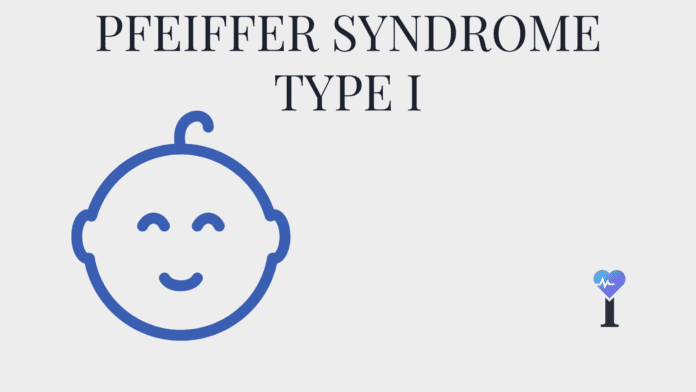Overview Of Pfeiffer Syndrome Type I
Pfeiffer syndrome type I is a genetic disorder characterized by the premature fusion of certain skull bones (craniosynostosis). This early fusion prevents the skull from growing normally and affects the shape of the head and face. Pfeiffer syndrome also affects bones in the hands and feet.
Many of the characteristic facial features of Pfeiffer syndrome result from premature fusion of the skull bones. Abnormal growth of these bones leads to bulging and wide-set eyes, a high forehead, an underdeveloped upper jaw, and a beaked nose. More than half of all children with Pfeiffer syndrome have hearing loss; dental problems are also common.
In people with Pfeiffer syndrome, the thumbs and first (big) toes are wide and bend away from the other digits. Unusually short fingers and toes (brachydactyly) are also common, and there may be some webbing or fusion between the digits (syndactyly).
Pfeiffer syndrome is divided into three subtypes. Type 1, also known as classic Pfeiffer syndrome, has symptoms as described above. Most individuals with type 1 Pfeiffer syndrome have normal intelligence and a normal life span. Types 2 and 3 are more severe forms of Pfeiffer syndrome that often involve problems with the nervous system. The premature fusion of skull bones can limit brain growth, leading to delayed development and other neurological problems. In addition, individuals with type 2 or 3 can have the fusion of the bones (ankylosis) in the elbow or other joints, limiting mobility, and abnormalities of the face and airways, which can cause life-threatening breathing problems. Type 2 is distinguished from type 3 by the presence of a cloverleaf-shaped head, which is caused by a more extensive fusion of bones in the skull.
Commonly Associated With
- acrocephalosyndactyly, type V
- ACS V
- ACS5
- craniofacial-skeletal-dermatologic dysplasia
- Noack syndrome
Causes Of Pfeiffer Syndrome Type I
Pfeiffer syndrome is most commonly caused by mutations in the FGFR2 gene. Mutations in the FGFR1 gene cause a small percentage of cases of type 1 Pfeiffer syndrome. Mutations in this gene have not been associated with type 2 or 3.
The FGFR1 and FGFR2 genes provide instructions for making proteins known as fibroblast growth factor receptors 1 and 2, respectively. Among their multiple functions, these proteins signal immature cells to become bone cells during embryonic development. A mutation in either the FGFR1 or FGFR2 gene alters the function of the respective protein, causing prolonged signaling, which can promote the premature fusion of skull bones and affect the development of bones in the hands and feet.
Other
Pfeiffer syndrome affects about 1 in 100,000 individuals. This condition is inherited in an autosomal dominant pattern, which means one copy of the altered gene in each cell is sufficient to cause the disorder.



